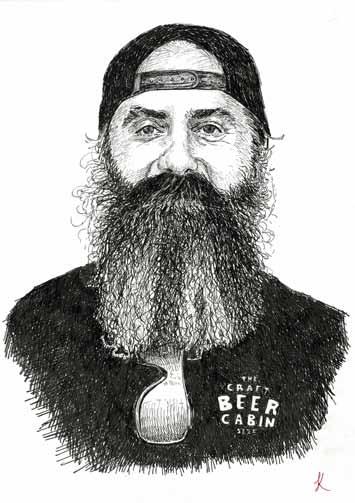
18 minute read
Arts & entertainment
Rainbow foam mountains and biodegradable fireflies ―
By Holly O’Mahony
Advertisement
Greenwich+Docklands International Festival (GDIF) returns this summer with a bumper 17-day programme of family-friendly outdoor installations and live performances spanning a broad spectrum of the arts. Now in its 27th year, the festival is going heavy on the big, eye-grabbing attractions it was originally known for, after the two pandemic summers forced the team to put together a more demure programme and think about durational installations which could run over a number of days.
“We had to change tack. GDIF used to be a festival that specialised in spectacles 5,000 people might come together to experience for 45 minutes,” recalls Bradley Hemmings, founder and artistic director of the festival. This year, he’s excited to present a festival more in keeping with his original ambitions, and having also co-directed the Opening Ceremony of the Paralympic Games when they were held in London in 2012, he’s well-versed in orchestrating large-scale phenomenons. “We’ve always tried to do those extraordinary, arresting moments people will take away and remember for a long time afterwards,” he says.
Unlike many big wow-factor spectacles that focus entirely on creating surface-level pizzazz, GDIF’s events are ethical, sustainable and firmly rooted in the arts; Bradley and his team carefully choose each company based on their commitment to these principles and an ability to create attractions likely appeal to an audience of all ages.
While local to Greenwich, GDIF has an international outlook: its programme of events are created by companies from around the world – something which has been significantly harder to organise, Bradley says, since Brexit. “I guess we’ve built up knowledge but it’s still a slower and more painstaking experience bringing people across borders. All of those visa and travel arrangements are complicated to make,” he says, but: “London being the most international city in the world is an important value for us and we’ll always fly that flag.”
Every year, the festival runs with an underlying theme, which this year is ‘common ground’. “Given the times we’re living through, which have been divided and uncertain, we want the festival to [be] a sanctuary where you can find something uplifting and positive, and share common ground with others,” Bradley says.
The 2022 festival was originally due to run under the theme of ‘new beginnings’, “then the invasion of Ukraine took place in February and we realised it was not going to be the right theme,” reflects Bradley. “We landed on ‘common ground’ because it encompasses everything and might be what everybody needs right now.”
While the show-stopper spectacles offer a muchneeded dose of escapism, Bradley was keen not to overlook the war in Ukraine, and give Ukrainian artists a platform to tell their story. ‘Discover Ukraine: Bits Destroyed’ (August 26 - 29) offers visitors “an audio-visual spectacular presentation in the grounds of the Old Royal Naval College”.
Not all modifications made for the pandemic have been overturned. In both 2020 and 2021, GDIF’s On Your Doorstep series brought live performance into often overlooked pockets of the borough, including Avery Hill and Abbey Wood, in a bid to dissuade people from travelling into town centres when contagion was rife. So popular was it with local audiences who otherwise might not have been able to access the festival that the team are bringing it back this year, heading deeper into neighbourhoods with circus, theatre, dance and arts events.
Long-running favourite Dancing City (September 10 & 11, Canary Wharf), a celebration of diverse dance from across the world, is also returning with a bumper programme of performances.
Keeping the festival free remains integral to the ethos of GDIF. This year, only seven of the events are ticketed and only two of those have a price attached: site-specific theatre spectacle ‘Peaceophobia’ (September 7 - 10, Queen Elizabeth Olympic Park Multi-Storey Car Park) and Protein dance company’s promenade dance odyssey ‘En Route to Common Ground’ (September 2 - 4, Royal Arsenal Riverside) both cost £10, but even those can be accessed for free by local residents.
“A free festival in the middle of a cost of living crisis, what could be better?,” says Bradley.
GDiF 2022: thE hiGhliGhtS…
sPARK A new work by Dutch artist Daan Roosegaarde, Spark is a gentle, organic firework display, set to illuminate the sky above the Queen’s House in Greenwich. Inspired by the natural light of fireflies, the installation features thousands of biodegradable lights, which can be marvelled at from below. Attendees are encouraged to bring a pillow and a blanket to watch the sky sparkle.
Bradley says: Spark completely reinvents the idea of what a conventional public celebration might look like. Many people might reach for fireworks and pyrotechnics, but [given] our need to be much more environmentally responsible, this allows us to achieve that while also doing something incredibly beautiful. [Visitors] will be mesmerised by the myriad of floating particles above them.
August 26 - 27 | 9pm The Queens House Lawns, SE10 9JH
cHARon
First seen at Burning Man festival in America, Peter Hudson’s monumental installation Charon is a 32ft rotating zoetrope mounted with replica human skeletons – a nod to the ferryman in Greek mythology, who would row the recently deceased across the river Styx to the afterlife. Animated at dusk and set dramatically against the fading light, Charon is operated by a team of volunteers – and you can join them.
Bradley says: Charon is an ingenious object encouraging us to reflect on mortality, something it’s important we have the opportunity to do after the times we’ve just lived through.
September 1 - 10 | 8pm Limmo Peninsula, Royal Docks
Island of Foam by Stephanie Luning
©Violetta Wakolbinger
IsLAnD oF FoAm: VeRsIon XVIII
Fancy seeing Greenwich Peninsula engulfed in rainbow-coloured mountains of foam? German artist Stephanie Lüning makes her UK premiere with Island of Foam, a large-scale installation which will shape-shift and float before finally disappearing.
Bradley says: Like Daan Roosegaarde, Stephanie Lüning has really considered the environment with her installation, which makes arresting use of public space; people won’t be able to forget it.
September 3 - 4 | 6pm Greenwich Peninsula
UnFURL
One for night owls: this multi-coloured light show sees nature, art and soft robotic technology combine to create enchanting, alluring installations visitors can get up close to and manipulate with their movements.
September 9 & 10 | 8pm Bethnal Green Gardens
GReenWIcH FAIR
Look forward to an afternoon of family-focused street arts, theatre, circus and interactive installations as GDIF’s much-loved festival rolls into town.
Greenwich+Docklands International Festival (GDIF) runs from August 26 - September 11 with events taking place in various locations. Admission: FREE. www.festival.org/gdif-2022/
August 27 | 1-7pm Old Royal Naval College & Cutty Sark Gardens

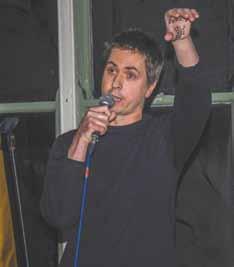
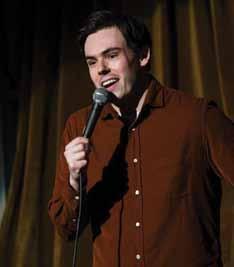

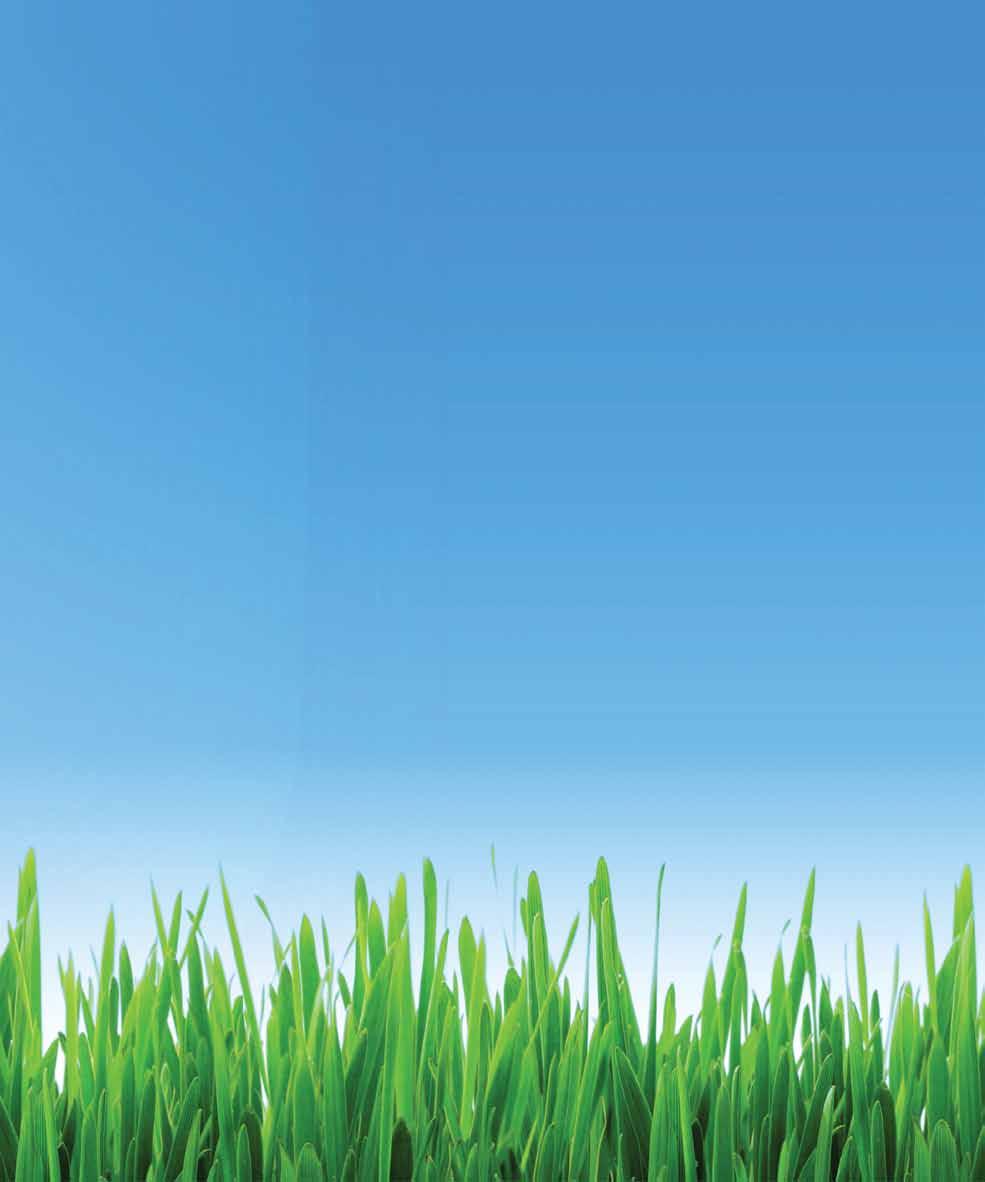



Comedy on the Green is back! The best alternative comedy night south of the river returns at the iconic Balham Bowls Club. Come join us every other Thursday to see some of the biggest names in comedy and the best rising stars in the country.
We kick off again on September the 1st with a blockbuster line up to announce our return.
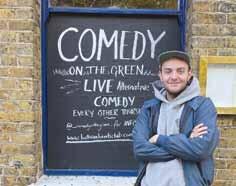
15th September 29th September 13th October 27th October 10th November 24th November 8th December
Tickets can be bought through the Instagram page @_comedyonthegreen_ or through the Balham Bowls club website - balhambowls.com
Make sure to follow us on Instagram and Twitter for daily updates and behind the scenes of all our upcoming shows!
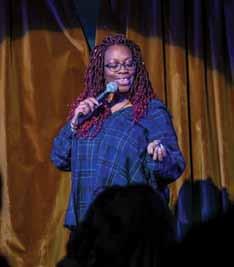
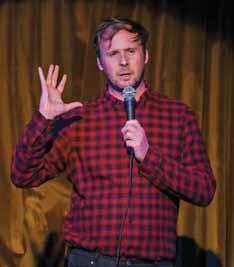
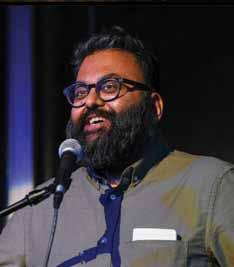
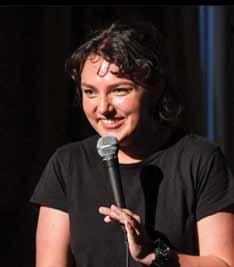
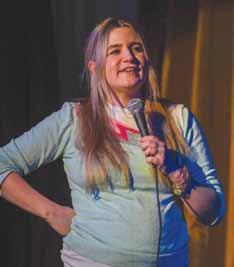
epic Burning man installation comes to GDIF ―
By Laura Burgoine
An artwork of monumental scale is reinventing the wheel at the Greenwich and Docklands International Festival (GDIF) this summer. Charon, a gigantic 32ft high rotating zoetrope with posed human skeletons mounted on its inner edge, is completely human powered and each night, bathed in dramatic light and sound, teams of volunteer operators will animate the ferryman, who in Greek mythology rowed the souls of the recently departed across the river Styx. Originally created for Nevada arts festival, Burning Man, San Francisco artist Peter Hudson is now bringing his kinetic installation to a new festival site in Royal Docks.
“It weighs 14,000 pounds and takes two containers to ship it over,” Peter tells the South Londoner.
Despite its vast scope, the creation came about “very quickly,” Peter says. “It took less than a year from concept to build. It took on a life of its own.”
The artist, who began his career as a stage hand for the San Francisco Opera before moving into dressing television and film sets, applied for a grant from Burning Man to create Charon after attending the festival himself and being inspired to give back. “The most compelling principle of Burning Man, to me, is no commodification, no advertising, no buying or selling. It’s a gift economy. No one gets paid,” he says.
“Over 100 volunteers helped created Charon; the grant money is basically spent on rent for a shop space but I could not have done any of this without the volunteers.” In addition to the grant, which only covered around a third of the building costs, the team also raised money on kickstarter and by doing events.
Charon is Peter’s fourth zoetrope and all his pieces are human powered.
“This project took all my focus. I’m relatively unemployed when I’m working on a piece. They let the artist take a stipend out of the grant for living expenses but I’m basically happily unemployed,” he says.
Greek mythology also inspired Peter’s first piece, a swimming Sisyphus called Sisyfish.
“The theme for Burning Man in 2011 [when Charon debuted] was rites of passage and I thought, well the last rite is death. I was already thinking of something with skeletons then Charon came to me in less than an hour. It willed itself into being, which is a blessing and curse because then it’s so much work to then actually make it. But then when I see the look in people’s eyes when they see it moving for the first time, that’s the moment. That’s what I wanted to give back to the Burning Man community. That’s why I do this.”
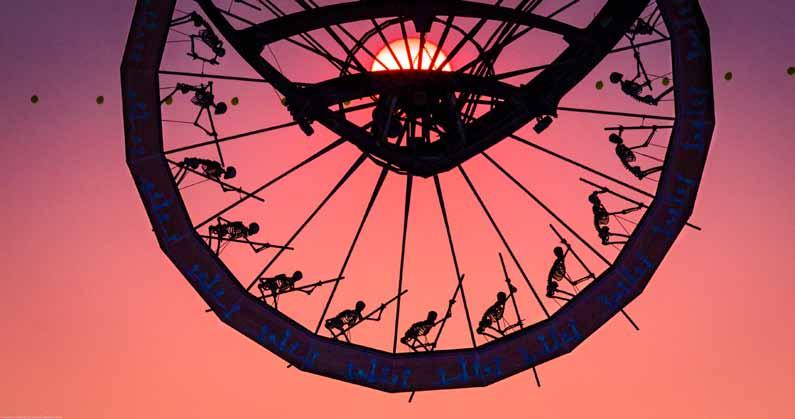
Charon by Peter Hudson, Photo by Mitzi Peirone
Charon is at GDIF from September 1-10 at 8pm on Limmo Peninsula. https://festival.org
You’re gonna hear them roar! ―
By Holly O'Mahony
What’s your go-to karaoke song? Don’t be shy, we all have one. If your vocal chords need a dusting down, you’re unlikely to stumble upon as friendly a mic and stage as that found at Bearpit Karaoke. The free, Berlin-born phenomenon returns to Vauxhall Pleasure Gardens for the fifth year this summer, running once a month until September. Its next sing-along is happening on August 13, so get practising your favourite ABBA, Meatloaf or George Michael tracks.
Founded roughly a decade ago by Joe Hatchiban, Bearpit Karaoke has become a Sunday fixture of Berlin’s Mauerpark, reportedly attracting up to 2,000 spectators in any one session. The Vauxhall iteration is a more under-the-radar affair, but it runs on the same principle: to get strangers singing and having fun together.
While persuading your mates to be your backing singers or duet double-act might lend you the confidence you need to take to the stage, Bearpit Karaoke champions the brave and encourages singers to coax strangers into joining them for a song. So brainstorm those crowd-pleasing earworms – this is your time to shine.
Bearpit Karaoke, 139 Vauxhall Walk, Lambeth, London SE11 5HL. August 13 and September 10, 3pm - 7pm. Admission: FREE. www.beinvauxhall.com/whats-on/bearpitkaraoke-summer-22/
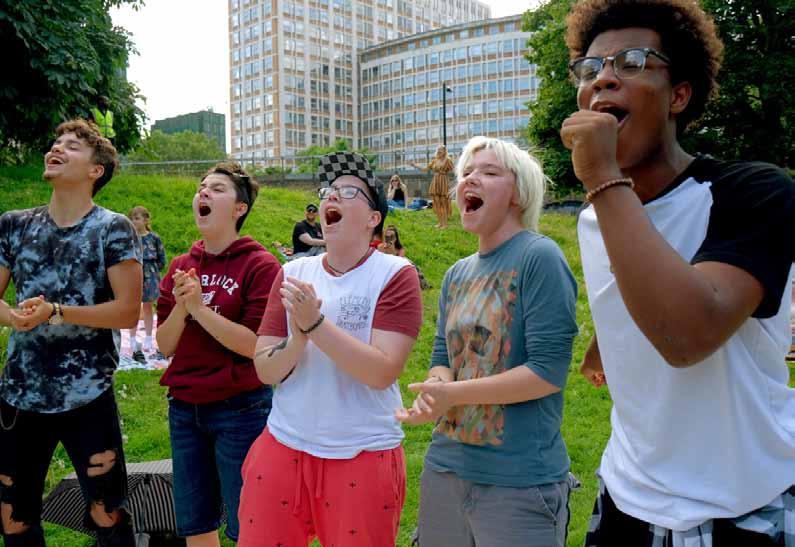
“If we can keep an open dialogue, we can tackle anything.” ―
By Holly O'Mahony
Dancer Joe Powell-Main came back to the dance world with a different perspective and approach. Now he’s changing the landscape.
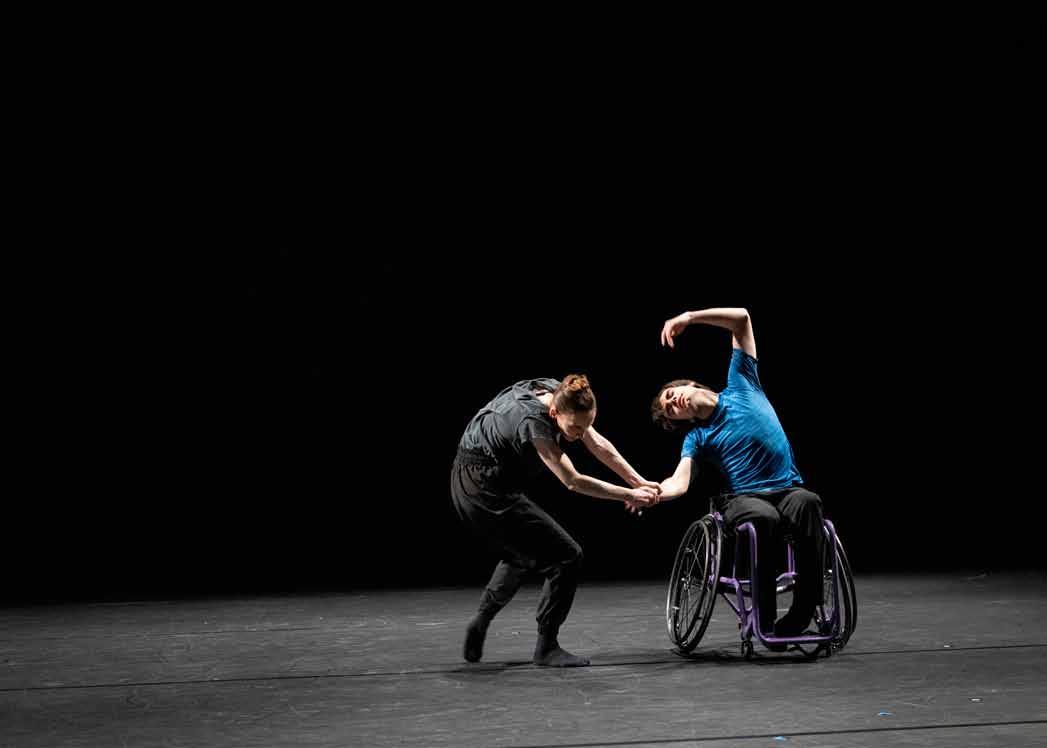
Differently abled dancer Joe Powell-Main is taking this summer’s Greenwich and Docklands International Festival by storm, performing in a ground-breaking Royal Ballet production of Sleepwalker. A retelling of La Sonnambula, the piece is directed by Royal Ballet principal dancer Alexander Campbell.
“I was intrigued by the opportunities that the story presented and was keen to explore a way of moving that was interesting and could capture the essence of a fascinating phenomenon,” Alexander tells the South Londoner. “I had wondered whether the unique qualities and skillsets of wheelchair dancers might lend itself well to this idea and when I saw the work that Kristen had created for Joseph Powell-Main alongside dancers of the Royal Ballet for the Paralympics GB Homecoming I was convinced that it was an idea worth pursuing.”
Based in Wales, Joe has been dancing since age 5, and went to the Royal Ballet School (RBS) for four years, where he performed with the Royal Ballet in The Nutcracker, Matthew Hart's Peter and the Wolf at the Royal Opera House Covent Garden, and understudied and performed in the world premiere of Antonia Castilla's Legado.
During his fourth year of training, Joe developed injuries after a prolonged period of growth and underwent surgery on his left knee, which led to further complications. At the same time he was also involved in a serious car accident and acquired a disability, losing the use of his left leg, which meant he had to leave RBS. He stopped dancing for three years. “It was quite a challenging process but with support from family members, I found my way back to dance,” he says. “I’d love to see more dancers with disability working with different companies and I think people are interested in that.”
Joe found his way back into the field through ballroom and Latin dance. “My mum had seen a leaflet for dancers that use wheelchairs and I started going to the nearest classes, which were in Manchester,” he recalls. “The other dancers in the class were aware of how to work things for themselves, they didn’t hide their disability and weren’t ashamed of that. I had to watch how they did things. You don’t always have someone showing you how you can use a wheelchair, so I gained a lot from watching others.”
Coming back to classical ballet has been a journey for the dancer; the Paralympics GB Homecoming was one of the biggest performances of his career. “When I stopped dancing I found it difficult to look at anything to do with ballet. I was so upset by it so I hid all my books and things away for a while. I was quite nervous coming in and doing work with the Royal Ballet but what’s good is things have changed. There’s been a massive evolving of the entire dance industry as a whole towards inclusivity.”
“There’s not many other dancers with disability in the classical and contemporary world. It’s definitely a challenge to adapt that to a wheelchair because I was used to standing. I’m lucky I can still use my right leg but the physics of a wheelchair come with certain limitations so I had to do a lot of discovering for myself.”
Joe’s sister is a ballet teacher and an ongoing source of support and inspiration to him. “People took a chance on me. I did a degree in dance at the Arden School of Theatre in Manchester and they recognised they’ve not had a student on the dance floor with a disability and were eager to learn about that and see what’s possible. It’s good because I have the support of others,” he says.
The Royal Ballet are making “massive steps forward” in seeing what’s possible for differently abled dancers, Joe continues. “It’s going to be a continuous process to break down barriers and make classical ballet more accessible,” he says. “Looking at how others do stuff was very key to seeing what was possible. I’m very lucky I have a dance chair made specifically for dancing. That’s not to say there aren’t possibilities with an everyday manual chair but having a chair custom made for me that’s lightweight and you can move it at speed, that’s really enhanced some of the stuff I do.”
“When I was younger, I kind of thought once you’d made it to a professional level that you would have learned everything but that’s not the case. Regardless of disability or not, every dancer is always learning new things you can do.”
In the past, there’s been misconceptions that classical ballet dancers are there to execute someone else’s vision but things are changing, Joe says. “In the work I’ve been doing, they’re keen for me to have a voice.”
“When I was coming back to dance, I struggled to find someone like me. So if dance companies or producers are willing to take that step to try things out, especially in bringing disability and classical ballet together, it’s going to be a big learning process, and it’s not easy, but if we can continue to have conversations and just keep an open dialogue we can tackle anything.”
©Royal Opera House
Joe performs in Sleepwalker at GDIF on September 10 and 11 at 1:35pm and 3:55 in the Columbus Courtyard, Canary Wharf. Admission: free. https://festival.org/gdif
Art with heart ―
By Holly O'Mahony
Jonny Kemp on sketching the South Norwood community
Lockdown, for many of us, was a chance to devote more time to our loved but neglected hobbies; the activities which offered us creative solace, but typically took a back seat to our careers, family responsibilities and daily errands. For English teacher and South Norwood resident Jonny Kemp, the months at home led him to spend more time on his art, sketching portraits and creating oil paintings. He found he had a real knack for it and when the world reopened, Jonny took the opportunity to set up a stand at the annual South Norwood Market, where he sold his first works and realised there was demand for his drawings.
This is not your typical side-hustle story, though: with his talent for reproducing faces on paper, Jonny has become a piece in the puzzle of South Norwood’s ongoing regeneration. His most recent project, South Drawood, saw him celebrate his fellow SE25 dwellers by drawing the portraits of local business owners, community workers and faces about town.
Working with his partner Lizzie Walters, who’s currently studying for a PhD in community development, Jonny staged an exhibition of his portraits at local multipurpose arts hub Stanley Arts (formerly Stanley Hall). Lizzie interviewed the subjects about their work in the community and loyalty to the area, and these stories accompanied the sketched faces as part of the show.
“We wanted to do something towards building a sense of community and bringing people together,” explains Jonny. “South Norwood is in the process of regenerating and it’s trying to do so without losing the existing character [or] becoming gentrified. It’s not a big place and it's often overlooked as it's between Croydon and Crystal Palace … but it’s got this cool and exciting community who really love it; people move there for the sense of community.”
South Drawood, he says, is primarily about “celebrating the people who run an independent business or the people who volunteer there”, and “showing the real diversity of the area”.
Noting it’s not dissimilar to the work she’s doing as part of her PhD research, Lizzie adds: “I've been speaking to the community about what they do and why on a daily basis. There’s people who look after the parks, people who litter pick, people trying to make the area prettier and promote this amazing community and area. They’re all really friendly and passionate about where they live.”
For Jonny, part of the joy in choosing his subjects has been telling the stories which aren’t typically celebrated. “It’s good to hear the stories of the people you wouldn’t expect to hear,” he explains. “We hear a lot about people who open cafés or craft beer places, but less about the person who moved from Brixton and opened a locksmiths,” he points out, in reference to one of his sitters.
Following the exhibition at Stanley Arts, Jonny gave the portraits to his sitters free of charge, but he’s in talks with the council about the possibility of a more permanent, public home for his sketches – potentially the South Norwood Underpass, which is already a walk of art.
With his South Drawood exhibition wrapped up, Jonny is taking paid commissions for his sketches and says it’s a real mix in terms of who requests one. “Sometimes it’s a gift, sometimes it’s a secret present for a partner, or it’s to commemorate a specific event, like a family portrait with a newborn child. Sometimes it’s remembering someone who’s passed away and the family has a nice photo of them they want to individualise or personalise in some way.”
As for any readers who want to give sketching a go themselves, Jonny has some tips. “Drawing is like learning a musical instrument; it’s something you should practise as frequently as you can,” he says. While if you’re painting portraits, “Forget thinking you’re looking at a person, and think of [the face] as a series of shapes. An eye is an oval, for example. Break it down into geometric shapes and angles.”
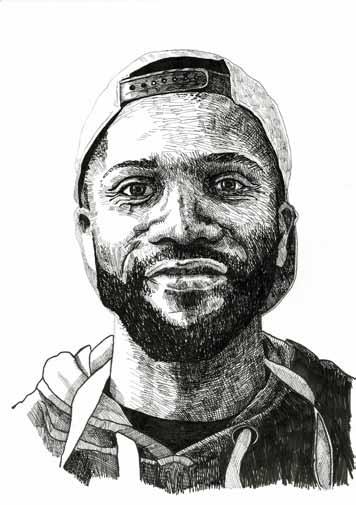
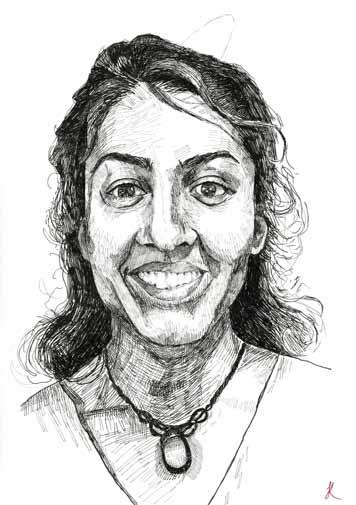
For more on Jonny Kemp’s portraits and South Drawood, visit: www.jonnykempart.co.uk/
